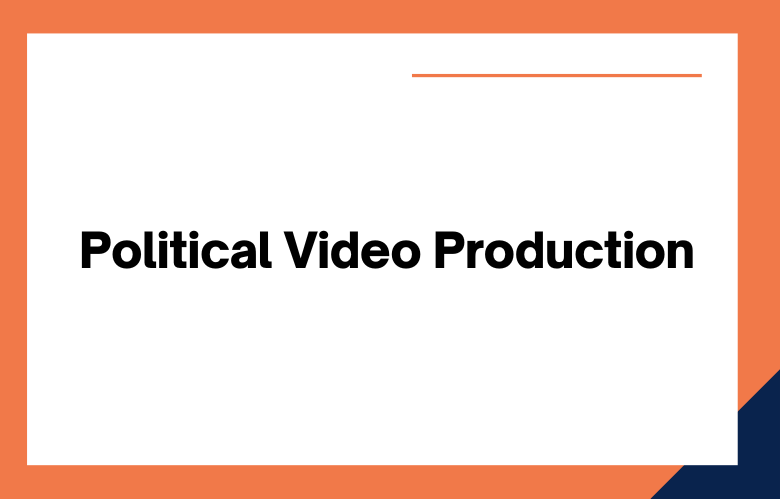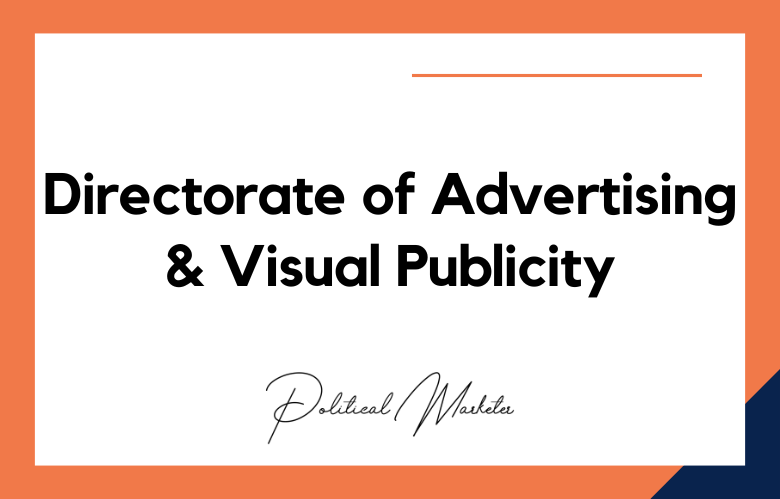Though television has been the cornerstone of political campaigning for decades, the rise of social media and online video means that candidates increasingly rely on videos to reach voters. A well-done video can be a powerful tool, but keeping some things in mind when producing them is essential. Here are the best practices for video production in political marketing.
As we move into the digital age, more and more political campaigns use video to engage voters. Video can be a potent tool for getting your message out there, but producing high-quality and compelling videos is essential. Here are some points on how to make successful political videos.
Politics is all about communication. Politicians must use the latest and most effective tools in their communications arsenal to reach out to potential voters.
One of the most powerful tools available today is video production.
Politicians can connect with voters more profoundly and effectively promote their message by creating engaging videos.
We will explore some of the best practices for video production in political marketing. We will also look at some examples of compelling political videos.
Best Practices for Video Production in Political Marketing
Best practices for video production in political marketing are constantly evolving. It is essential to be on the curve to follow the latest trends.
Political marketing is a complex and fast-paced field that is constantly evolving. Staying ahead of the curve is essential for success. Video production is a critical part of effective political marketing. Here are some actions to keep in mind:
For making successful marketing videos, certain practices should follow. It is essential to understand the target audience. What are their key demographics and their interests? What message will resonate with them?
Once the target audience is recognized, the next step is to develop a creative and compelling concept for the video. It involves anything from telling a story that appeals to viewers’ emotions to using humor or another laughing incursion to capture attention.
Once the concept is final, it’s time to start production. It involves everything from filming and editing the footage to creating any CGI or special effects that may be necessary. Everything must execute flawlessly to create a video that will have the desired impact on viewers.
- Plan your videos carefully. Every aspect of your video should support your overall campaign goals.
- Keep your videos focused and on message. Viewers will appreciate your ability to get to the point quickly.
- Pay attention to production values. Your videos should look professional and polished.
- Make sure your videos are accessible to as many people as possible. Use closed captioning and other accessibility features.
- Know your audience inside and out. Understanding who you are marketing to is essential. Segmenting your target audience and delivering targeted messaging will result in more engagement and better ROI.
- Keep it short and to the point. People have shorter attention spans than ever before in our social media-driven world. Ensure your videos are under 2 minutes and quickly get to the end.
- Use emotion to tell your story. People connect with stories that evoke emotion. Use video to say to the candidate’s account or campaign to resonate with viewers.
- Include a call to action (CTA). What do you make your viewers do after watching your video? Please include a clear call to action at the end of your video so there is no doubt about what you want them to do next.
- Establish a clear goal for the videos
- Create a storyboard or treatment to help plan the video’s content
- Choose a location and filming equipment that will best help tell your story
- Cast actors and interview subjects who will best represent your message
- Shoot and edit the video using professional techniques
- Add music, graphics, and other effects to enhance the video’s impact
- Distribute the video through social media and other channels
- Start with a strong message
- Keep your video short and sweet
- Make sure your video is high quality
- Use dynamic visuals to engage viewers
- Use social media to spread the word
- Monitor feedback and make changes as needed
- Script the video before filming begins
- Use a B-roll to break up long monologues
- Make sure your audio is clear and consistent
- Edit the video for pacing and flow
- Add music to set the tone
- Share your video online
- Shoot on location whenever possible
- Edit the video for pacing and clarity
- Add music to set the tone
- Choose the right crew and equipment
- Draft a storyboard or treatment to help visualize the video
- Choose a location and team carefully
- Ensure you have the necessary equipment
- Scout the area and take test shots
- Film the entire video in one take whenever possible
- Edit the video using professional software
- Add music and graphics as needed
- Publish and promote your video
- Cast actors and crew who are passionate about your message
- Shoot on location whenever possible
- Use high-quality equipment
- Edit the video to create a powerful, cohesive message
- Distribute the video through social media and other channels
- Script the video before filming begins
- Shoot on location whenever possible
- Use professional equipment and lighting
- Edit the video to create a concise, engaging story
- Upload the video to social media and other online platforms
- Script the video before shooting
- Shoot on location whenever possible
- Use professional lighting and audio equipment
- Edit the video footage to create a concise, engaging story
- Distribute the video through social media and email marketing
- Film on location whenever possible
- Use a variety of shots to keep the video interesting
- Keep the video short and to the point
- Edit the footage for pacing and clarity
- Add music and graphics as needed
- Publish and promote the video
- Shoot on a tripod whenever possible
- Use natural light whenever possible
- Keep audio levels consistent throughout the video
- Edit the video to make it as concise and exciting as possible
- Start with a strong message
- Keep your videos short and sweet
- Use relatable examples
- Appeal to people’s emotions
- Make sure the tape is high quality
- Share your videos on social media
- Monitor feedback and make changes accordingly
By following these best practices, you can produce high-quality, engaging videos that will help you win voters over to your side.
In political marketing, there are numerous best practices for video production.
Perhaps most importantly, videos should be concise. They should tell a story that engages the viewer and delivers a clear message.
It is often beneficial to include visual aids such as graphics or images. Videos must be well-produced to achieve their desired effect.
Conclusion
Producing quality video content for political campaigns can be a daunting task. Remembering the campaign’s goals and creating videos that will help you reach them is essential. We know what works and help you maximize your video production budget.
Contact us today if you’re ready to take your campaign to the next level!
Best Practices for Video Production in Political Marketing: FAQs
What Is Video Production In Political Marketing
Video production in political marketing involves creating video content to promote candidates, policies, or political messages across various platforms.
Why Is Video Important In Political Campaigns
Video allows campaigns to connect emotionally with audiences, explain complex issues clearly, and engage voters across multiple media channels.
What Types Of Political Videos Are Commonly Produced
Common types include campaign ads, speeches, debate highlights, policy explainers, testimonials, and behind-the-scenes content.
How Can Storytelling Improve Political Videos
Storytelling makes political messages relatable, memorable, and persuasive by connecting with viewers on a personal level.
What Role Does Scriptwriting Play In Political Video Production
Scriptwriting ensures messages are clear, concise, and aligned with campaign goals while maintaining a consistent tone.
How Important Is Visual Branding In Political Videos
Consistent use of colors, logos, and fonts strengthens brand identity and makes campaign videos easily recognizable.
Can Political Videos Be Used For Social Media Campaigns
Yes, videos optimized for platforms like Facebook, Instagram, YouTube, and TikTok can increase reach and voter engagement.
How Does Live Streaming Benefit Political Campaigns
Live streaming allows real-time interaction with voters during rallies, Q&A sessions, and other political events.
What Equipment Is Needed For Political Video Production
Equipment may include cameras, microphones, lighting kits, tripods, editing software, and teleprompters.
Can Smartphones Be Used For Political Video Production
Yes, with good lighting, sound equipment, and editing apps, smartphones can produce high-quality political videos.
How Can Political Campaigns Ensure Good Video Quality
By using proper lighting, clear audio, professional editing, and stable camera work to create polished content.
What Is The Role Of Editing In Political Video Production
Editing shapes the final message, removes errors, adds visual effects, and ensures smooth storytelling.
How Can Political Videos Be Optimized For Different Platforms
Adjusting aspect ratios, adding captions, and tailoring video length help maximize engagement on each platform.
Can Video Production Influence Voter Perception
Yes, high-quality and well-crafted videos can positively influence how voters perceive a candidate or campaign.
How Can Campaigns Measure The Success Of Political Videos
Metrics such as views, watch time, engagement rate, shares, and conversions help assess video performance.
What Are The Costs Associated With Political Video Production
Costs vary based on equipment, crew, location, length, and complexity of the video.
Can Animation Be Used In Political Video Production
Yes, animations can simplify complex topics, highlight statistics, and make content more engaging.
What Are Common Mistakes To Avoid In Political Video Production
Mistakes include poor audio, unclear messaging, overly long videos, and lack of a clear call to action.
How Can Political Videos Comply With Advertising Regulations
By following election laws, including required disclaimers, and ensuring truthful and transparent messaging.
What Are Best Practices For Political Video Production
Best practices include clear messaging, strong storytelling, professional production, and strategic distribution.
One way to get in touch is by filling out our online form on this site or give us a call at
+91 9848321284. Let’s work together today!











